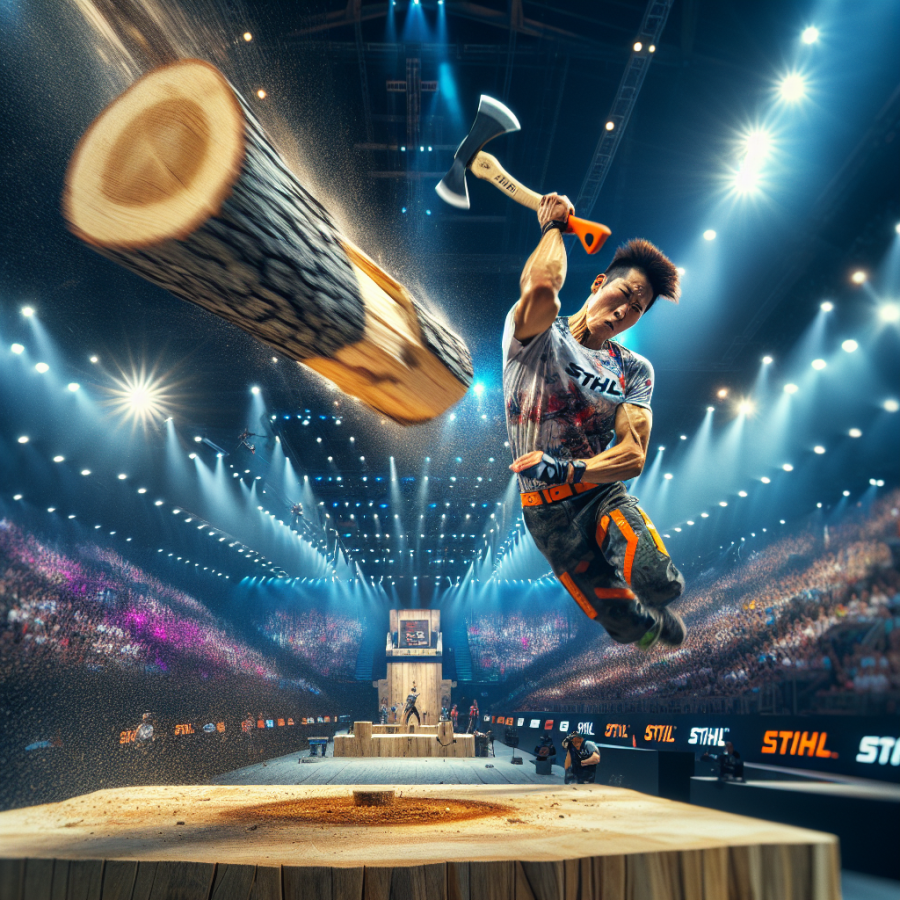The Stihl Timbersports Legacy: Evolution of a Lumberjack Phenomenon
The Stihl Timbersports series has carved its place in sports history, taking what was once a necessity for survival and turning it into a global spectacle of strength, skill, and endurance. The story of Timbersports is intrinsically linked with the evolution of lumberjack competitions, which began as local contests in logging communities to showcase the prowess of the lumberjacks. These contests would pit man against nature, and later, man against man, in a thrilling display of axmanship and sawing.
With its roots in the forests and log camps, early loggers would challenge each other to determine who could fell trees the fastest or cut through logs with precision. These friendly competitions gradually became more organized, leading to the first official lumberjack competitions. As the sport grew, so did the audience and the range of events, evolving from more traditional sawing and chopping into a broader array of disciplines we see in today’s Timbersports competitions.
In 1985, Stihl, the renowned German manufacturer of chainsaws and other handheld power equipment, took the initiative to brand and formalize these competitions, thus founding the Stihl Timbersports Series. Stihl's investment and marketing expertise brought a level of professionalism and international attention that was unprecedented in the world of competitive lumberjacking. It organized the structure of the events, standardized the rules, and most importantly, it put safety protocols in place, defining a space that was both competitive and secure for the athletes.
The series spread rapidly, transcending its niche origins to appeal to a wider audience. Stihl used its wide dealer network to promote the competitions, and it wasn't long before the event was being broadcasted on television, earning a dedicated following. Today, the Stihl Timbersports Series has expanded globally, with athletes from nations that aren't traditionally associated with lumberjacking taking part in the action. Countries such as Germany, Sweden, and even Australia host their version of the competition, each delivering national champions who compete in the World Championship.
To meet the demands of a larger audience, the events have become more spectacular, with athletes combining raw power with finesse in events like the Springboard Chop and the Underhand Chop. Yet, it’s not just about the traditional axe and saw anymore; the Hot Saw event features custom-built chainsaws resembling mechanical dragons, spitting noise and sawdust as they power through massive logs in seconds.
Read also:
Unleashing Agility: The Art of Precision Parkour
Climbing the Ranks: How Stihl Timbersports Athletes Hone Their Craft
In the world of Stihl Timbersports, athletes are revered not just for their power and skill, but for the relentless dedication to honing their craft that takes them from novices to champions. The journey to the top in this demanding sport requires rigorous training, strategic mental preparation, and an unwavering commitment to continuous improvement.
At the core of a Stihl Timbersports athlete’s training regimen is physical conditioning. Athletes dedicate hours each week to strength training, focusing on core stability and the explosive power needed to excel in events like the Hot Saw, Single Buck, and Springboard Chop. They build endurance through cardiovascular workouts because, despite the short duration of each event, the physical demand on their bodies is intense. In the world of competitive lumberjacking, a few seconds can be the difference between victory and defeat, and supreme fitness is non-negotiable.
Specific skill work is as critical as overall physical conditioning. Athletes spend countless hours refining their technique for each discipline. For instance, perfecting the precision and rhythm required for the Underhand Chop or the Standing Block Chop involves breaking down the chopping motion into its component parts and practicing each swing with meticulous attention to detail. They strive to hit the same mark with the same amount of force, wielding their axe in a way that maximizes efficiency and minimizes wasted energy. This level of skill work ensures they can deliver powerful and accurate strikes that contribute to a successful cut.
Mental preparation is equally vital in Stihl Timbersports, often separating the good athletes from the great. Competitors visualize their routines, practice stress-management techniques, and develop strategies to maintain focus amidst the high-pressure competition environment. The psychological component can be as demanding as the physical one, and athletes often work with sports psychologists to refine their mental game.
In addition to individual training, Stihl Timbersports athletes often engage in group workshops and camps where they can learn from experienced professionals and peers. These gatherings are valuable for sharing best practices, discussing techniques, and staying updated on the latest equipment and training methods. Networking with fellow athletes provides a sense of community and mutual support within the competitive scene.
Equipment maintenance and selection play an outsized role in Stihl Timbersports. Athletes take great care in choosing the right axes and saws, and a significant amount of time is spent ensuring their tools are in optimal condition.




